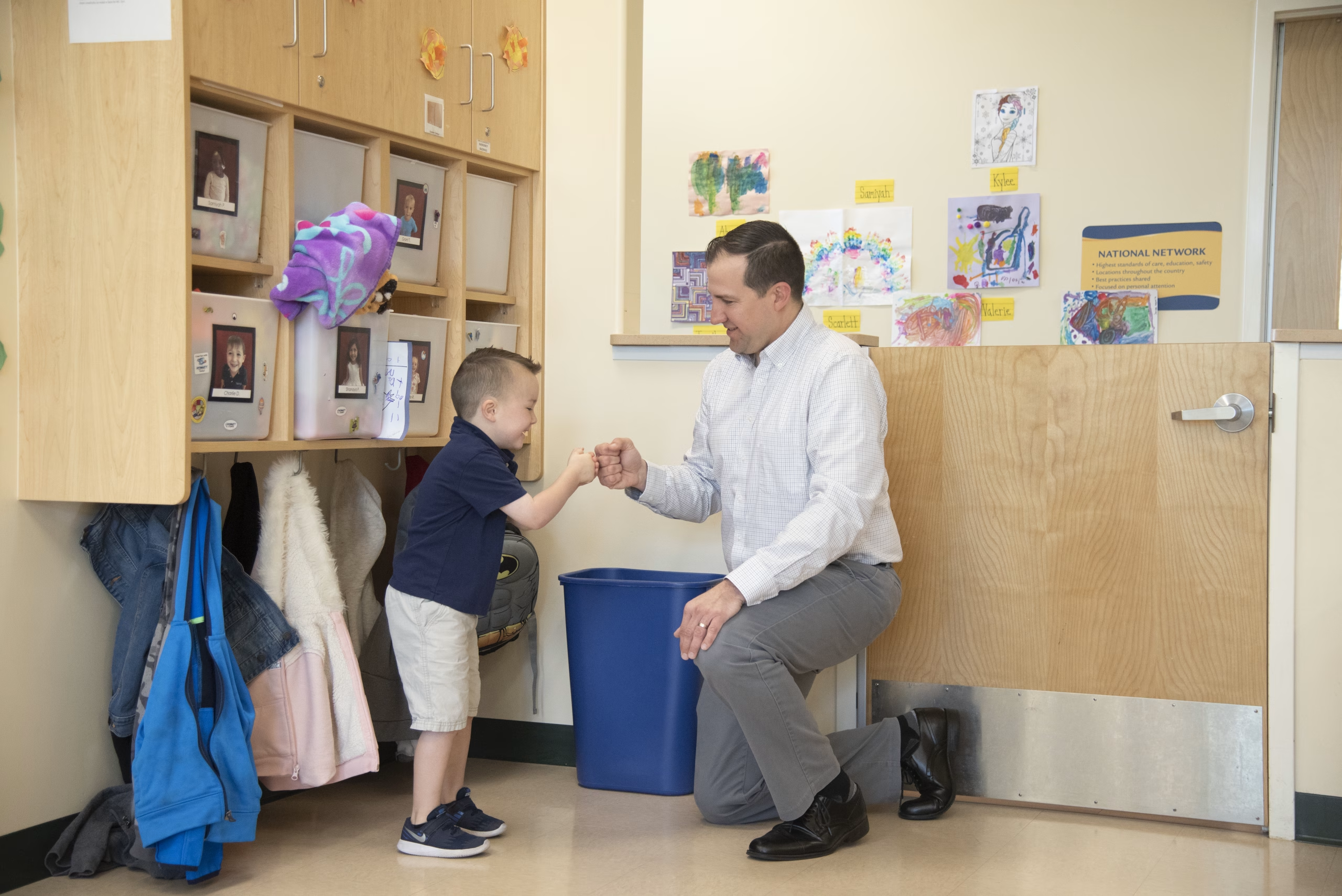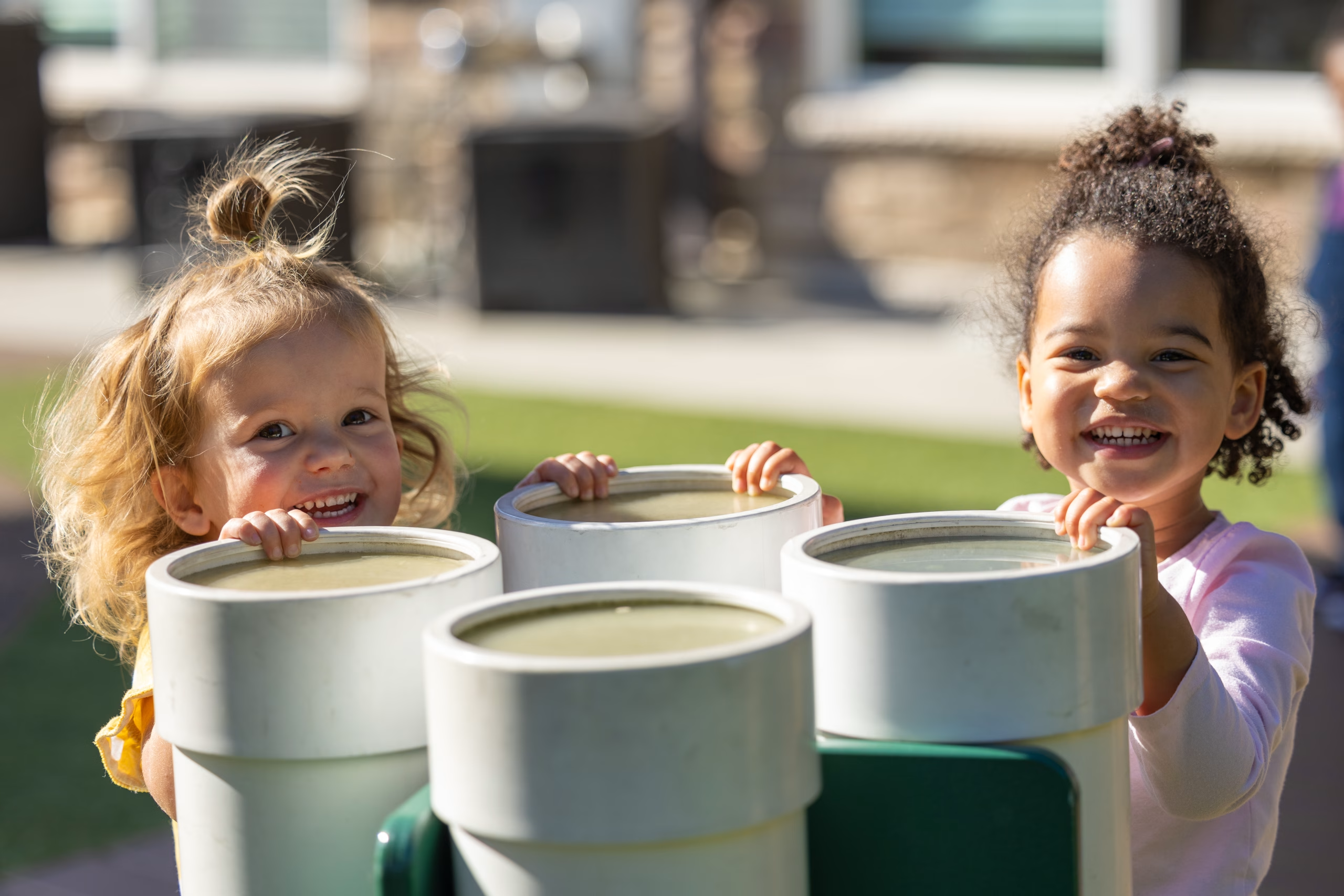
They’re everywhere, and every kid wants one. Handheld “fidget spinners” are the latest fad sweeping schools and playgrounds, but are they safe for kids under 5?

Fidget spinners might look safe, and at an affordable five-dollar price point, they can be tempting to purchase, but it’s important for parents and teachers of younger children, 5 and under, to know what toys are safe and age-appropriate.
“A fidget spinner is basically a small bearing mounted in a piece of plastic or other material. You hold it and spin it.” – RHETT ALLAIN for Wired magazine
Fidget spinners are palm-sized gadgets with weighted bearings that spin, spin, spin like tiny windmills. They’re dominating Amazon’s top-selling toys list and retailers can barely keep them in stock.
Since these toys are growing in popularity and many are wondering what Kiddie Academy’s stance is on these spinners, education experts from Kiddie Academy’s corporate office are weighing in below on a few considerations for parents.
“Regardless of the toy, some teachers and schools ask that parents have their children leave personal items at home. When children bring toys from home to school they have a tendency to get lost, broken, or cause disruption over sharing. Asking families to adhere to this rule with regard to fidget spinners as well would be an acceptable request – especially for younger classrooms where having spinners in common areas might be a safety concern.” – RENEE THOMPSON, Director of Curriculum
The Safety Issue
“Many fidget spinners, like the ones sold at Learning Express, are labeled to be suitable for children ages 6 and up, and unsafe for children under the age of 3 due to the choking hazard caused by small parts. They are not necessarily appropriate for preschool, because I don’t know if young children have the manual dexterity to pinch them with thumb and forefinger and spin using the middle finger. I worry that, if it breaks, the center piece would pose a choking hazard for young children. Some also have removable half-inch bearings which would be a definite choking hazard for younger children who often put toys in their mouths. I would suggest that preschool children have many more age-appropriate toys and games in their classrooms to keep their hands busy.” – RENEE THOMPSON, Director of Curriculum
A Teaching Moment
For school-aged children who can use, handle and play with these spinners safely, the toys could be strategically incorporated into a hands-on lesson about STEM, for example. When children are interested, having fun and being themselves, it’s easier for them to learn.
“Incorporating student interest in the classroom can really drive engagement and community. To many, these little fidget spinners are merely toys, but to an educator, we can see that their design has the ability to teach the toy’s user foundational principles of physics like velocity, friction and acceleration. And we know that children learn best through play. It also encourages children to experiment and push the boundaries of those physics by trying various ‘tricks’ and ‘stunts.’ – RICHARD PETERSON, VP of Education
There are multiple ways to integrate spinners into learning activities which include lessons about science, technology, engineering and math (STEM). Consider ways to use these spinners in a lesson by asking children to count how long each spin lasts, try spinning the spinner on different surfaces (water, dirt, grass) and observing what happens, or see who can get the spinner to spin the longest. Talk to children about why it spins and what slows the spinning down (friction).
Using this toy that children are already excited about is a great way to start a conversation about science.
A Parent’s Perspective
“I think there is a great benefit to sensory stimulation for children struggling with specific challenges. The initial intent might have been that the fidget spinner would catch on as a beneficial tool, but it has become a fad because they are actually just interesting and fun to play with. Many children, teenagers, and adults are enjoying them, and enjoying them together. My 6-year-old has come up with some creative ways to use it, which I’ve noticed does have STEM-related learning opportunities which I will continue to encourage.” – HEATHER SCHORAH, Kiddie Academy’s Director of Education Quality





